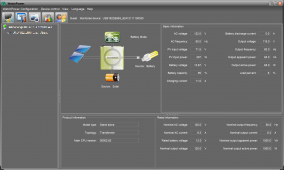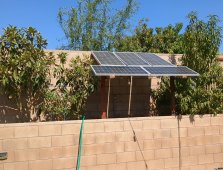Looking to jump into the solar world. I want to boondock camp out of my truck. I am envisioning a 12/24 volt system, 400 watts of solar panels, 2 100 ah lithium batteries, more if needed, dc-dc charger from my truck battery, 2000- 3000 pure sine inverter, and battery monitor.
My power requirements.
1. Iceco refrigerator, 12 v 65 watts
2. LED lights
3. Water tank, 30 gallon with diaphram pump, sporadic use for showers and dishes.
4. Instant hot water heater 120 v, 10-12 kw. or is it possible to run a 240 volt heater on a 60 amp double pole breaker with the correct inverter.
5. Televison / Radios
6. Portable AC unit. 120 volts, 1200 watts. This is only to be used during the day by itself in a hot desert environment, full sun, panels directed at the sun. The only other electrical use would be the Iceco refrigerator. This will be very sporadic use in the hot desert. My wife can't take the heat for very long.
As you can see I am not an electrical engineer, the 400 watt package you have listed is a starting point for me. Whether it will be enough is what I am trying to find out.
My power requirements.
1. Iceco refrigerator, 12 v 65 watts
2. LED lights
3. Water tank, 30 gallon with diaphram pump, sporadic use for showers and dishes.
4. Instant hot water heater 120 v, 10-12 kw. or is it possible to run a 240 volt heater on a 60 amp double pole breaker with the correct inverter.
5. Televison / Radios
6. Portable AC unit. 120 volts, 1200 watts. This is only to be used during the day by itself in a hot desert environment, full sun, panels directed at the sun. The only other electrical use would be the Iceco refrigerator. This will be very sporadic use in the hot desert. My wife can't take the heat for very long.
As you can see I am not an electrical engineer, the 400 watt package you have listed is a starting point for me. Whether it will be enough is what I am trying to find out.





